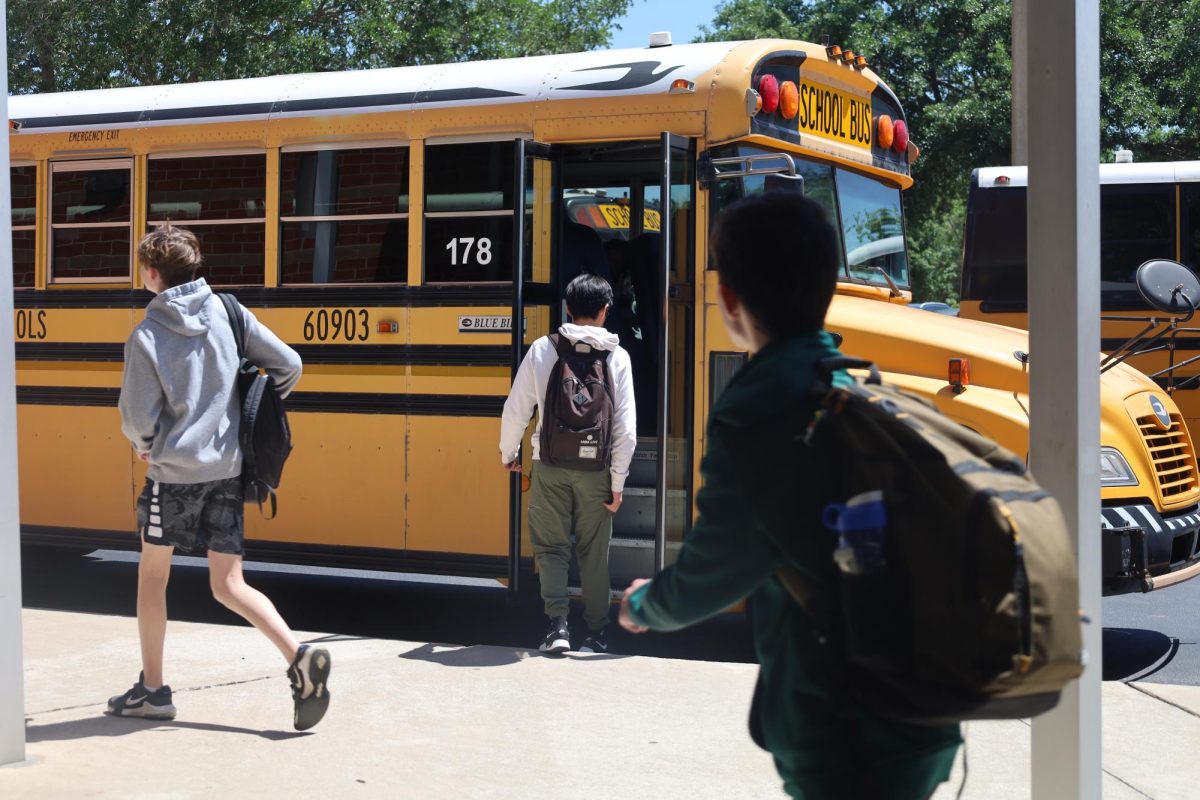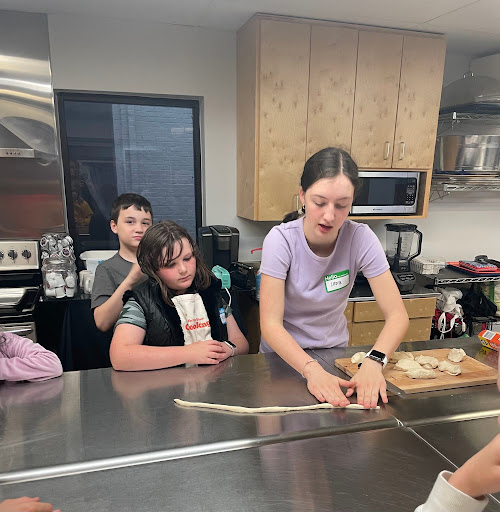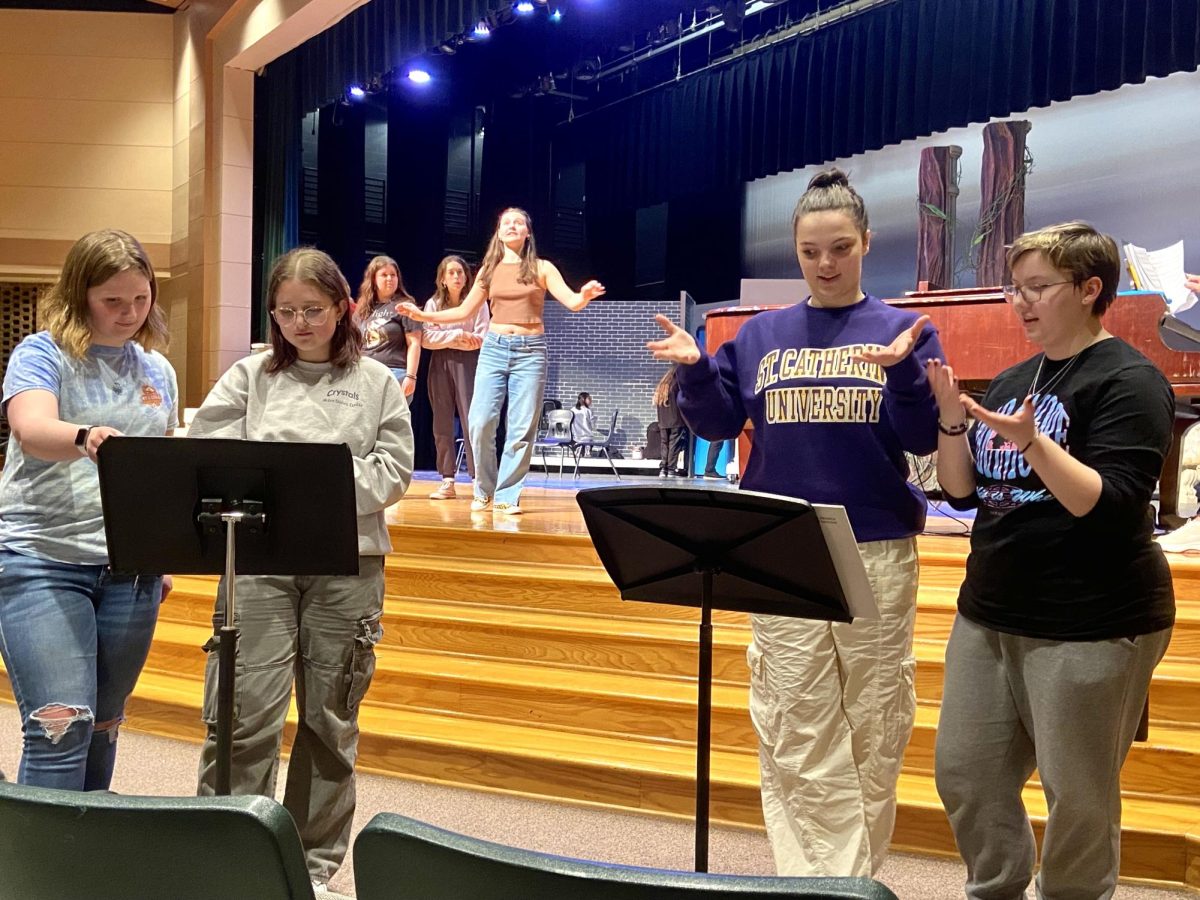Millions across the world turned to the sky tonight, awaiting the first sighting of the new crescent moon. As the pale white glow emerged from the clouds and replaced the setting sun, cheers erupted, and people rushed to make preparations for Ramadan.
Ramadan, the holiest month in the Muslim calendar, will take place this year from Mar. 10 to Apr. 9. Over the thirty days, those who are physically able will fast from sunrise to sunset, fulfilling one of the five pillars of Islam, sawm.
Traditionally, observers begin their day with prayer and suhoor, a morning meal. In the evening, Muslims typically break their fast and begin the evening iftar meal by eating a date, as is sunnah, or the way of the Prophet Muhammad.
Fasting can physically wear on the body. Low energy from disrupted meals can compound drowsiness after staying up to pray taraweeh, the specialized evening prayer. Sophomore Judi Abdelrazik, who fasts every Ramadan, spoke to these hurdles for observant students at Harker.
“It’s always been really easy for me, prayers and fasting, until [high school],” Judi said. “With a lot more schoolwork, it’s harder to pray taraweeh at night. With tests, I have to fast accordingly. Tests take priority over fasting, because I can’t retake tests.”
Upper school English teacher and diversity leader Susanne Salhab recommended students communicate with teachers regarding these challenges.
“Teachers should let their students know that if anyone plans to fast Ramadan they should reach out to their instructors,” Salhab said, “If a Muslim student comes forward, teachers could ask how they could best support the student during the month and perhaps consider allowing fasting students to take assessments in the morning and offer some leniency with deadlines.”
The month contains many significant events in the Muslim calendar, like Laylat al-Qadr, the “Night of Power.” The holiday, which occurs midway through Ramadan, commemorates the day Gabriel revealed the Quran to the Prophet Muhammed. Salhab said she celebrated Laylat al-Qadr for the first time while living in Jerusalem in eleventh grade.
I definitely feel most connected to Islam and my identity as Muslim during Ramadan
— Muslim Students Association Co-President Minal Jalil (10)
“One of the most incredible moments of my life emerged during the Laylat al-Qadr,” Salhab said. “My family and I, along with thousands of people prayed in the third holiest site in Islam, the Dome of the Rock. I’ll never forget the experience. To see everyone praying together, in unison, was such a powerful moment.”
Ramadan culminates with Eid al-Fitr on the final day of fasting, one of the most important holidays in the Islamic calendar. People celebrate Eid differently all over the world, but common themes center around community, family and charity, a pillar of Islam.
Muslim Students Association Co-President Reza Jalil (12) celebrates Eid each year.
“It’s more than a family, it’s a community event,” Reza said. “A lot of these people we only meet at events like these, so it’s really fun to get to see them. After all the fasting, and all the hardship, you get to celebrate together. Everyone is always looking forward to the party.”
Fellow MSA Co-President Minal Jalil (10) echoed Reza’s sentiment, emphasizing her connection to her community during Ramadan.
“I definitely feel most connected to Islam and my identity as Muslim during Ramadan,” Minal said. “Fasting is something that consumes your whole day. You’re not constantly thinking about not eating, but it’s something you have to be aware about all day. Praying more often, [doing] everything that you’ve been taught to do when you were younger; I just feel very connected.”
This story was originally published on Harker Aquila on March 10, 2024.






![It was definitely out of my comfort zone to get [the dress] and decide I loved it enough not to wait and risk not having something that memorable.](https://bestofsno.com/wp-content/uploads/2024/04/Precious_20180902_JRS_00008_ed1.jpg)


![Sophomore Sahasra Mandalapu practices bharatanatyam choreography in class. These new dances will be performed in an annual show in February. Mandalapu found that practicing in class helped her overcome stage fright during her performances. “When [I] get on stage, Im nervous Im going to forget, even though Ive done it for so long,” Mandalapu said. “Theres still that little bit of stage fright [when] I second-guess myself that I dont know it enough, but I do because Ive been practicing for a whole year.”](https://bestofsno.com/wp-content/uploads/2024/05/Sahasra-6-Large-1200x844.jpeg)

![In their full runway outfits, (from left) Audrey Lee 25, Olivia Lucy Teets, 25, Fashion Design teacher Ms. Judy Chance, and Xueying Lili Yang pose for a photo. All three girls made it to Austin Fashion Week by getting in the top 10 in a previous runway show held by Shop LC.
[I like my students] creativity and how they can look at a fabric and make it their own, Ms. Chance said.](https://bestofsno.com/wp-content/uploads/2024/04/IMG_9686-e1714088765730-1129x1200.jpeg)














![IN THE SPOTLIGHT: Junior Zalie Mann performs “I Love to Cry at Weddings,” an ensemble piece from the fall musical Sweet Charity, to prospective students during the Fine Arts Showcase on Wednesday, Nov. 8. The showcase is a compilation of performances and demonstrations from each fine arts strand offered at McCallum. This show is put on so that prospective students can see if they are interested in joining an academy or major.
Sweet Charity originally ran the weekends of Sept. 28 and Oct. 8, but made a comeback for the Fine Arts Showcase.
“[Being at the front in the spotlight] is my favorite part of the whole dance, so I was super happy to be on stage performing and smiling at the audience,” Mann said.
Mann performed in both the musical theatre performance and dance excerpt “Ethereal,” a contemporary piece choreographed by the new dance director Terrance Carson, in the showcase. With also being a dance ambassador, Mann got to talk about what MAC dance is, her experience and answer any questions the aspiring arts majors and their parents may have.
Caption by Maya Tackett.](https://bestofsno.com/wp-content/uploads/2024/02/53321803427_47cd17fe70_o-1-1200x800.jpg)
![SPREADING THE JOY: Sophomore Chim Becker poses with sophomores Cozbi Sims and Lou Davidson while manning a table at the Hispanic Heritage treat day during lunch of Sept 28. Becker is a part of the students of color alliance, who put together the activity to raise money for their club.
“It [the stand] was really fun because McCallum has a lot of latino kids,” Becker said. “And I think it was nice that I could share the stuff that I usually just have at home with people who have never tried it before.”
Becker recognizes the importance of celebrating Hispanic heritage at Mac.
“I think its important to celebrate,” Becker said. “Because our culture is awesome and super cool, and everybody should be able to learn about other cultures of the world.”
Caption by JoJo Barnard.](https://bestofsno.com/wp-content/uploads/2024/01/53221601352_4127a81c41_o-1200x675.jpg)





